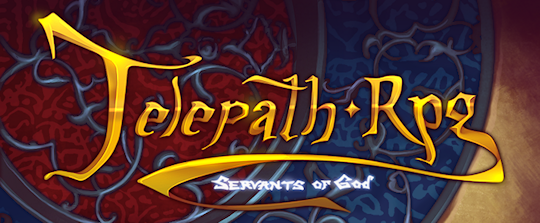Our industry has long had a problem with representing women in games, and the recent news about Assassin’s Creed Unity dropping its female playable characters continues the trend in a fittingly embarrassing fashion.
Earlier today, VideoGamer.com asked Ubisoft technical director James Therien why they had canned female playable characters in co-op multiplayer; Therien responded:
“It was on our feature list until not too long ago, but it’s a question of focus and production,” Therien explained. “So we wanted to make sure we had the best experience for the character. A female character means that you have to redo a lot of animation, a lot of costumes [inaudible]. It would have doubled the work on those things. And I mean it’s something the team really wanted, but we had to make a decision… It’s unfortunate, but it’s a reality of game development.”
Therien further opined that “it’s not a question of philosophy or choice in this case at all.” Well, I’m here to say that based on my experience as a developer, the notion that including female characters “doubles” the work is complete nonsense. And yes, deciding not to include playable women is, in fact, a choice.
A bit of background: Assassin’s Creed Unity is a single-player action adventure game with co-op multiplayer set during the French Revolution. As I mentioned in my rant on the subject last year, female protagonists are absolutely everywhere in history, and the French Revolution is no exception.
Historical records show that despite widespread, deep prejudice against female participation in politics during the period, women nonetheless participated in every aspect of the French Revolution. The Roy Rosenzweig Center for History and New Media writes:
Their participation took various forms: some demonstrated or even rioted over the price of food; some joined clubs organized by women; others took part in movements against the Revolution, ranging from individual acts of assassination to joining in the massive rebellion in the west of France against the revolutionary government. The most dramatic individual act of resistance to the Revolution was the assassination of the deputy Jean-Paul Marat by Charlotte Corday on 13 July 1793. Marat published a newspaper, The Friend of the People, that violently denounced anyone who opposed the direction of the Revolution; he called for the heads of aristocrats, hoarders, unsuccessful generals, and even moderate republicans, such as Condorcet, who supported the Revolution but resisted its tendency toward violence and intimidation. Corday gained entrance to Marat’s dwelling and stabbed him in his bath. He often took baths for a skin condition.
 So there you have it–not only were women participants in the French Revolution, some of them were, in point of fact, assassins. Man! If only there were some sort of game that was about assassins during the French Revolution–I bet that would be an interesting opportunity for some good female protagonists. Too bad no one is developing one of those!
So there you have it–not only were women participants in the French Revolution, some of them were, in point of fact, assassins. Man! If only there were some sort of game that was about assassins during the French Revolution–I bet that would be an interesting opportunity for some good female protagonists. Too bad no one is developing one of those!
Sarcasm aside, Ubisoft is missing a brilliant opportunity to explore the political context of assassination during a particularly dramatic moment in European history. By ignoring women, Ubisoft risks whitewashing women’s contributions to that historical moment. There are many more reasons why Ubisoft should reconsider its stance here as well, but I’ve covered those already. Instead of just retreading last year’s article, let’s talk about Ubisoft’s excuses for not making playable female characters, and why they don’t hold water.
As of March 2014, Assassin’s Creed Unity had been in development for more than 3 years, with no fewer than 10 Ubisoft development studios working on the game. According to IGN, “Ubisoft operates 26 studios across the world and employs more than 8,000 developers.” So, just to be clear, we’re not exactly talking about a game where the developer is limited by the number of modelers and animators at its disposal.
It is true that every developer–even a mammoth one like Ubisoft–has budget limitations. We live in a world of limited resources. Inevitably, there have to be trade-offs about how people focus their time and their money. But those trade-offs don’t just happen on their own. They require decisions. They require choices. When someone like Therien says that “it’s not a question of philosophy or choice,” remember to clench your ass, because he’s blowing smoke right up it.
In Assassin’s Creed Unity, we are going to see chairs. We are going to see tables, bushes, barrels. Those objects didn’t just come from nowhere; Ubisoft told modelers to sculpt those, told texture artists to texture them. Someone decided that those inanimate objects were a priority, and so they devoted resources to ensuring that the game had those things. Someone decided that having women playable in the game was not a priority. It may very well have been the very same person who greenlit the chairs and the barrels.
When we play co-op multiplayer in Assassin’s Creed Unity, we are going to have not just one male playable character, but several. Co-op multiplayer supports up to four players, so we’re talking about a bare minimum of four different male characters here. What would it have taken to simply make two of those characters female? Would it have “doubled the work on those things”? Based on my experience, the answer is “absolutely not.”
I have been developing Telepath Tactics out of a piddling (by AAA standards) $37,000 Kickstarter fund–and yet, I have male and female versions of every single one of the game’s 23 playable character classes. What’s more, it did not double the time, cost, or work involved to do so.
The reason why it did not double the work is that men and women really are not all that different for purposes of a combat-focused game. Male and female bodies work similarly for purposes of movement and attacking; it turns out that men and women have the same limbs, the same skeleton, the same muscle groups, and are subject to the same laws of physics. And that means that they should have near-identical attack movements.
 I recently took a months-long course in two-handed long sword combat; my class contained an even mix of men and women. The instructors taught us stances, guards, and cuts that Fiore dei Liberi developed during his career in 14th century Italy. Fiore’s moves, like all effective melee combat moves, are based upon body mechanics and physics. A female swordsman will execute a cut from posta di donna in precisely the same way as a male swordsman, because both rely upon the same body mechanics and the same overall body structure. There is no such thing as “girl moves” and “boy moves” in combat; and no one ever, ever actually fights like our friend Mia over on the right (unless they’re secretly desperate to have their hands chopped off at the wrists).
I recently took a months-long course in two-handed long sword combat; my class contained an even mix of men and women. The instructors taught us stances, guards, and cuts that Fiore dei Liberi developed during his career in 14th century Italy. Fiore’s moves, like all effective melee combat moves, are based upon body mechanics and physics. A female swordsman will execute a cut from posta di donna in precisely the same way as a male swordsman, because both rely upon the same body mechanics and the same overall body structure. There is no such thing as “girl moves” and “boy moves” in combat; and no one ever, ever actually fights like our friend Mia over on the right (unless they’re secretly desperate to have their hands chopped off at the wrists).
Because men and women use the same exact moves in a fight, the combat animations in Telepath Tactics did not need to be redone for alternate gender characters of either sex. I was able to simply reuse the movement and attack animations for men and women across every single character class.
What’s more, it didn’t require much redesign work to the characters, either. This is so because I gave the men and the women the exact same functional armor (i.e. not boob plate or chain mail bikini). Armor design, just like Fiore’s combat moves, is driven by the dictates of physics and the practical need to not have sharp metal objects setting up shop in one’s internal organs. As Ryan, the armorer / author of “Fantasy Armor and Lady Bits,” put it:
Plate armor is the way it is largely out of necessity. The layout and articulations of the plates are the best solutions the designers could come up with to balance mobility with protection.
…
Note the differences in the armor as depicted by artists of the time period. There are none. Both are fully covered and both have prominent chests and narrow waists. This is pretty common because that is how armor worked. It was a functional necessity more than it was a style.
For purposes of a game like Assassin’s Creed, making female characters is even easier than it was in Telepath Tactics, because you’re working with infinitely malleable 3D data. Armor, weapons and baubles can simply be mounted onto the new model at predefined attachment points.
What’s more, preexisting character animations can be applied directly to the model without having to go through the animation process from scratch, making the process of animating the new models positively trivial. 3D character animator (and Animation Director on Assassin’s Creed 3) Johnathan Cooper has estimated that the process would take no more than one or two days of work to accomplish:
In my educated opinion, I would estimate this to be a day or two's work. Not a replacement of 8000 animations. http://t.co/z4OZl3Sngl
— Jonathan Cooper (@GameAnim) June 11, 2014
@asphaltOnline Walk/run cycles and idles are the easiest way to define a character. Everything else is androgynous. See AC: Liberation…
— Jonathan Cooper (@GameAnim) June 11, 2014
According to animator Tim Borelli, there’s no need to redo the walk or run cycles, either:
Another thing- go out and watch people. You'll find that many women and men move EXACTLY THE SAME WAY. Hips, arms, wrists and all.
— Tim Borrelli (@Anim8der) June 11, 2014
So, when creating a realistic female variant of a male character, we’re looking at creating a new model, texturing it, rigging it, setting its attachment points, and then just reusing the exact same assets and animations you already created for the male characters. If there’s voice acting, we’d also need to record alternate versions of the character’s grunts and barks with a female voice actor. And that’s pretty much it. In no way, shape or form does that “double” the work involved.
Tara J. Brannington, former video game project manager and producer, has remarked that by this point in the development cycle, the groundwork for female characters should already be laid–especially since female characters were supposedly planned from the start:
If it’s anything like studios I’ve worked at in the past, the work on characters is not done in a silo. Initial concept work, wardrobe design, basic animations, art review checkpoints, etc. tends to be done in tandem unless you really want to make an insane amount of extra work for your team.
Is it an additional cost? Yes, absolutely. Is it double? If it’s double the work, they’re not working effectively.
Other than rank inefficiency, the only thing that would make the process of creating female characters as laborious as starting from scratch would be if the developer were committed to artificially inserting differences between men and women. The urge to contrive artificial gender differences serves no valid gameplay purpose, however, and in my view, it shouldn’t be in the game to begin with. It certainly does not provide a valid reason for avoiding female characters.
The bottom line is this: if I can afford to give women representation in my scantily funded indie title–one without the flexibility of 3D, and sporting a huge cast of playable characters–then Ubisoft can afford to assign a few of their 8,000 developers to do so in Assassin’s Creed. This is a story about Ubisoft’s priorities, not about the supposed impracticability of representing women in games. I will happily stand as a testament to the fact that it is not hard or unduly expensive to make women playable in games. As for Ubisoft, it sounds like they could stand to brush up on the middle part of the French Revolution’s famous motto: Liberté, Égalité, Fraternité.
Craig Stern is an indie developer currently working on the turn-based tactics game Telepath Tactics. He is the founder of IndieRPGs.com, and can often be found rambling in short, 140-character bursts on Twitter.





